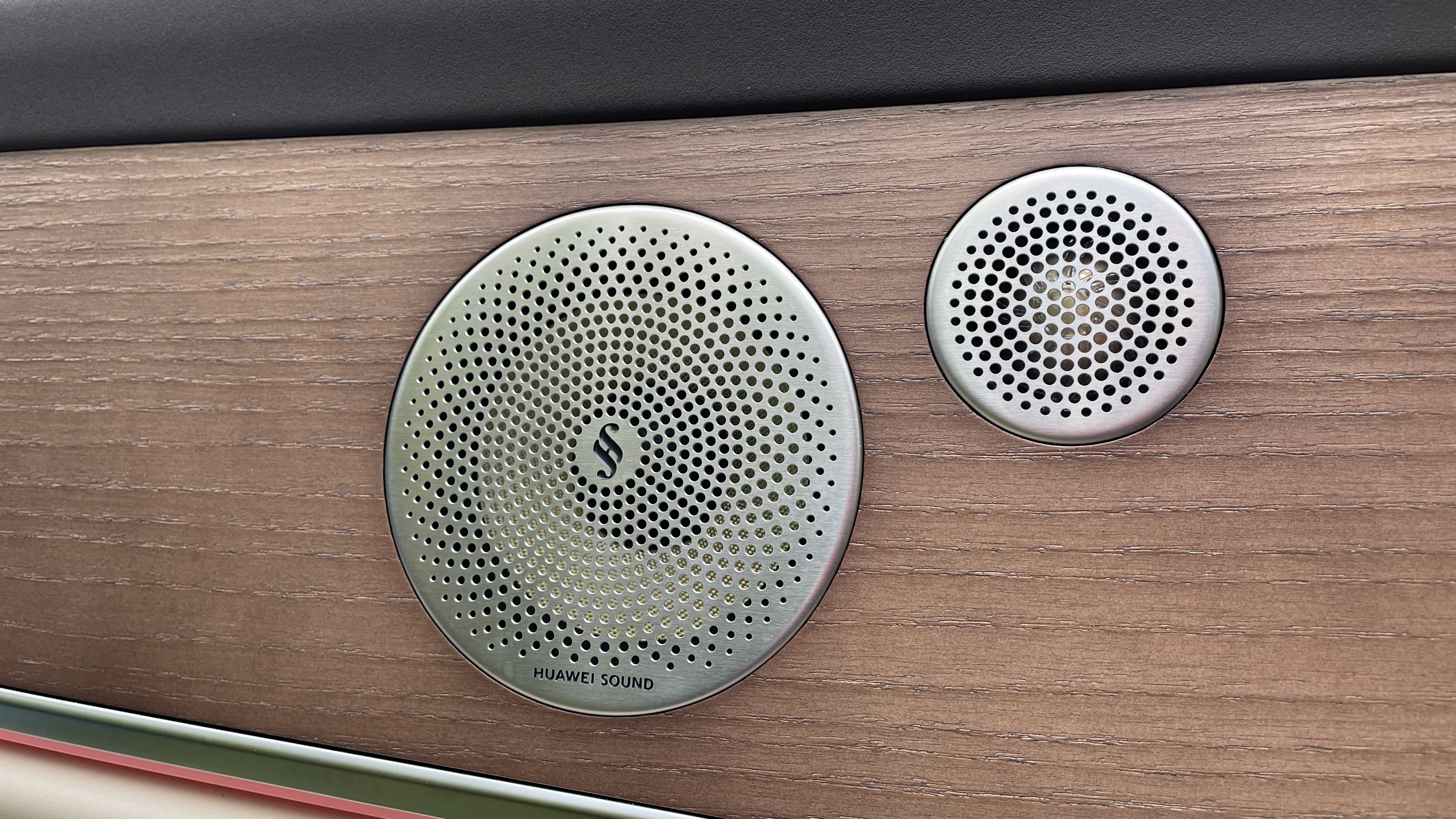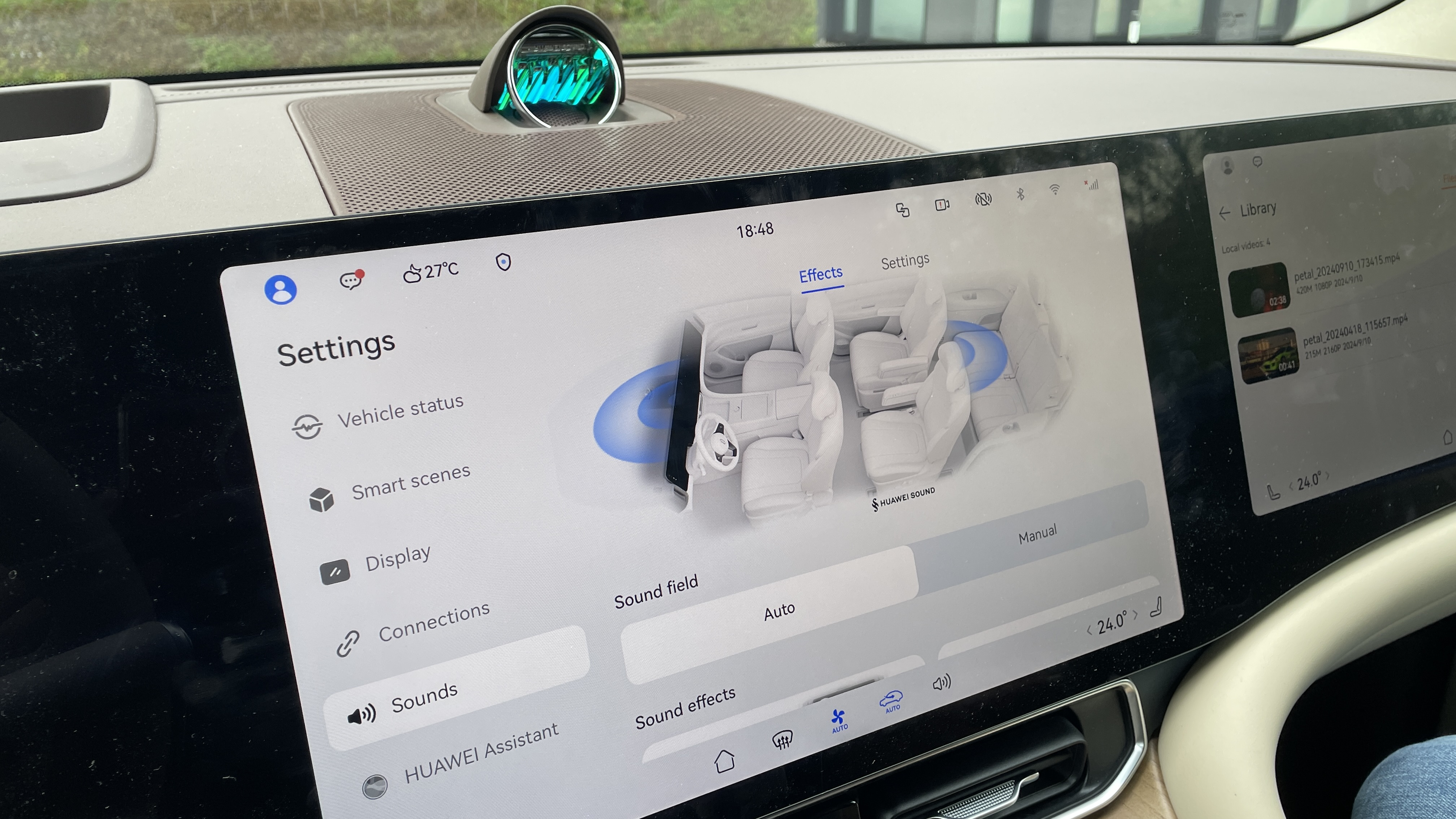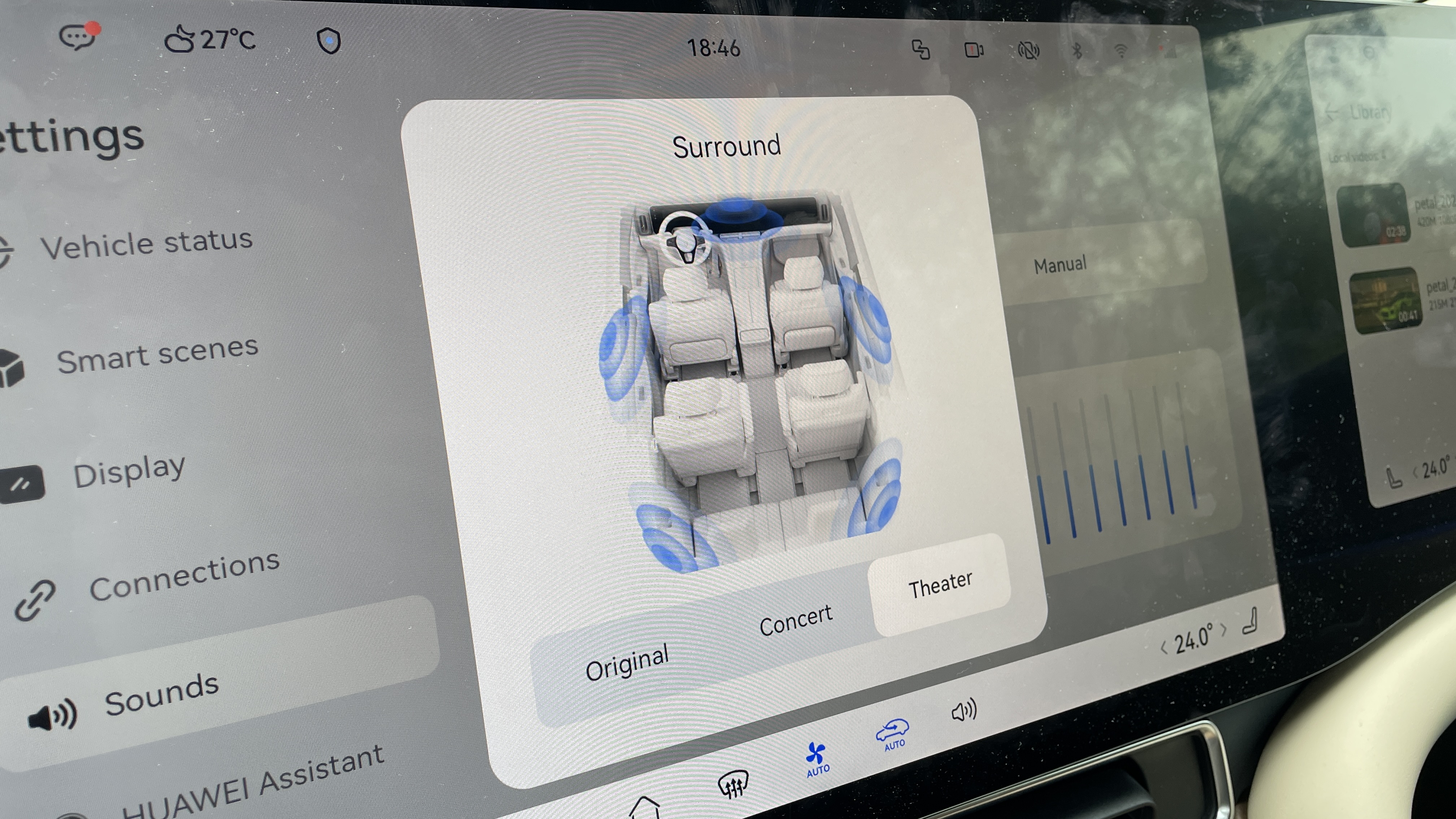
I think it’s fair to say Huawei probably isn’t the first brand that springs to mind when you think of in-car audio, or in-car anything for that matter. That is unless you live in China. You see, as part of the tech giant's huge portfolio of offerings, which includes everything from smartphones to wearables, data communications to cloud networks, it also offers complete in-car solutions.
We are talking about everything from amplifiers to head units, with the entire system driven (pun intended) by Huawei’s own operating system (which some of you might be familiar with) – HarmonyOS.
We were invited to one of Huawei’s facilities in Munich, Germany to meet with Lars Goller, Chief Automotive Sound & Acoustics Advisor, to talk about Huawei’s tuning process, the challenges associated with in-car systems and to have some brief hands-on time with one of its latest systems flown over from China…
Lars has years of experience in the audio industry with brands such as Gamut Audio, Bang & Olufsen and Harman International all listed on his CV. He was brought in by Huawei in 2022 to help improve the systems already in place, and to evolve the master tuning process which is designed to extract the very best out of each sound system.
“I was the first in the acoustics department at Huawei at the end of 2022. We started building things and looking at what they did in China, and we are now righting a lot of things to get more quality in the control process, into sound tuning.”
A point of reference

One example of getting the right processes is something I’m familiar with – getting a reference room up and running. Lars is keen to build a set-up where engineers can experience high-quality sound, and then take their learnings from that environment and apply it to the car.
“We are setting up a reference room in Garching (Germany) that will be mirrored in China and elsewhere if needed. We want to create a reference experience for sound tuners to see what's happening in both standard two-channel system setups and surround system setups…
“We take training [the sound tuners] seriously. We have a process for regularly getting them to experience good sound, both live and in listening rooms. We keep them well trained to know how things sound originally and how they are in reproduction, so they're capable of making that comparison without having to consult the listening room all the time.
“The Golden Ear groups are trained to do high-quality evaluations, and we know they can do this in blind listening. We train them with stereo and multi-channel and we apply phase shifts or time delays or frequency response alterations, so they can hear what's right and what's wrong.”
Sound tuning can be challenging

Designing and developing a car sound system isn’t simple, and there are a lot of different challenges involved, which Lars explains.
“It's really interesting to be in automotive, because you have all these restraints put on you, from early reflections to loads at low frequencies, and an environment that changes between vehicles, different seating positions and so on. It's not like setting up a listening room, where you can just put up your speakers, tune it and set your chair. That's not really what happens – you sit off to one side and people are tall or low, so there are a lot of things to consider.”
One of the cars I am introduced to during our chat is the Aito M9, a very popular SUV in China, which outsells its closest European rival, the BMW X5. Aito is a brand born out of a partnership between Huawei and the Seres Group, a Chinese automotive manufacturer.
The M9 has what Huawei calls its Superior tier of sound system with 25 drivers in a 7.1.4 configuration with height channels and 2080W of amplification. This car was already signed off before Lars became involved with Huawei, but Huawei’s next big project will be revealed in 2025.
Huawei was keeping its lips sealed on the make and model number but revealed the car will feature the company’s top-of-the-line Ultimate system with additional height speakers and beam steering and will squeeze in a grand total of 43 drivers in a 7.5.12 configuration with 3000 watts of power – that’s the largest number of speakers I’ve ever heard of being squeezed into a car.
“We've worked on the architecture so we can position the drivers as well as possible to make sure we have better radiation of sound and more correlation of left and right channels in all seats. We have more centre surround and middle channel surrounds in the cabin. And we have some middle surrounds in the back as well to add some ambience,” Lars explains.
The tuning process

Lars reveals a bit more about the master tuning process Huawei is devloping. “We are developing a standardised way of making sure that components are used to their optimum. It’s done for one position at a time – the more positions you use, the more of an average you take. It’s all about timing between things.”
What makes it tricky in a car is that you are sat off-centre, so close to either the left or right-hand side of the car. “If you do the same, sitting in a listening room – if you move to the side – you have a problem.
“We have driver-only, passenger-only, VIP seat (rear right or rear left) settings. Then we have all seats or front row and rear row. We develop all of these, and that's where we design all the processes, how to make the compromises, which speakers to add, which to use, how to use them, and how to design the filters. Master tuning is essential because the car is such a different environment. The more you average, the lower your overall impression or overall quality level is or reproduction level is.” As with any speaker design, it sounds as though compromises have to be made along the way, depending on how you want the system to perform.
Because of the different seating positions and the all time-alignment and processing required, it’s a long process. “Because the speakers are all in different positions, at least relative to all the seating positions, you develop all the individual speakers. It's not just one speaker, it's an individual speaker-design for each position of the full-range channels: so you have full-range surrounds, rear door speakers, front door speakers, you have a center – all these are close to full range. They are full individual developments in time and phase, filter designs and so on. So we try to develop each of the speakers for each of the positions we want, normally four. So if we have seven speakers, it's like developing 28 speakers, right?”
It’s much trickier to get the speakers in an in-car system aligned than it is in a traditional speaker, “because you have all the time differences in position and the angling differences between seats and so on.”
This means DSP (digital signal processing) is key when it comes to getting the best out of the system. “DSP solutions are essential to time-align things to fit; so when you separate the signal for speakers, you can assemble it again in time and then phase, to make sure that they are well integrated.” Huawei makes its own DSP together with other components for the system in Shenzen and Dongguan.
The role of the centre channel

“We want to have a uniform imaging, left, right. We want to have depth, height dynamics, reproduction of instruments and voices, etc,” So, you might think the centre speaker in a car would have a big role to play. Not according to Lars.
“For the individual seating modes, the center channel isn’t actually used at all – we think it harms the imaging. For really good tuning, you use the left and right channels and create your phantom image.
“We use the centre channel when you start averaging things because if you don't, your image will go strange. So when you have to centre [the image], or pull it up, that's when we use the center channel. Some people focus on voices, especially in the centre, so they don't move too much when you move around in your seat.
“It’s always a compromise on things. And it depends on the cabin a lot – how the speakers are located – and it's a challenge to get it right: can you get it to be stable where you want it to be stable?”
The impact of car production China vs Europe
One element I hadn’t considered before our chat was that car production cycles differ greatly in China compared with Europe. Things move a lot quicker in the Far East, which means Lars and the team need to be able to work more efficiently and come up with concepts and solutions.
“[In China] it’s two to three years from the start of a new model to being ready – typically that’s five to seven years minimum in Europe and the US.
“It's fast turnarounds in China, so everything has to be effective and efficient. That's also why this is important – that we are getting more and more skilled and precise in our development work – so we can get the basics out of the way, so we can start out at a higher level.
“In Europe, we normally work with previous-generation cars. Made up new concepts that are typical, and presented to the customer. They approve this, and when they go into production, or have the production car ready with final build, it's given to the development department to recreate that concept car thing. In China, you actually work on the actual car as an early prototype - it has the shape and interior, we just make sure it’s similar acoustically…”
It’s all about the bass

From all the systems I have personally tested, bass seems to be one of, if not the trickiest thing to get right; Lars agrees.
“We did a lot of research on the positioning of subwoofers when I was at Harman. We positioned under the seat, in the shelf, in the rear, up front. We tried to do a system where you could configure different subs – there is definitely a different character to each position, because you have different loads. There are so many configurations. And then we try to figure out how to use all that know-how, from all these positions, to create something that can do it all.
“Huawei had a specification for door woofers not to go below 100 hertz. One of the first things I changed when I came to China, was to say that we should probably just put that down to below 60Hz, somewhere where you don't really hear. If you have no audible issues and no power issues, you should do that.
“We have to accept that when you have one single sub, it works in only one position. If you move to the other front seat, there's a different timing to the sub; if it sits to the right side, it sits a bit closer, so we have to delay it a little more. If you go in the back seat, you have to delay it even further. And so there are a lot of issues with this, and as soon as you move it around, the experience for other people changes.”
Part of the solution might lie in using multiple subwoofers where possible. “If you do multiple and you can do a left and a right sub, you could make it more uniform and a more similar experience left/right.”
Hands-on with the Aito M9

We head outside to experience the M9 system both in the front and back of the car. Sitting in the spacious cabin, everything seems to be in order. There’s a driver display, a head-up display and two touch screens: one 15.6in LCD unit on the centre console and one 16in screen on the passenger side. One of the most eye-catching elements of the Huawei system sits right on top of the dashboard.
The Star-ring diffuser looks like a shiny trinket but it’s also an important piece of Huawei’s sonic puzzle, designed to give a more balanced sound from the centre channel. “It's a different way of creating a uniform sound field [from the centre channel] to all the seating positions.” When there are multiple passengers in the car Huawei claims it helps to deliver a more consistent experience and from a quick listen there does seem to be a good spread of sound in the front.

But I’m not quite prepared for what happens next. All of a sudden, I hear the whir of electronics as a motorised projector screen starts to descend from the roof of the car for the rear passengers. I turn round, look up at the ceiling and also spot a bright spotlight beaming from a projector mounted in the ceiling in the rear of the car. Unsurprisingly, it’s a 20,000 Chinese Yuan (around £2100) optional extra for the car, which starts at 469,800 Yuan (around £50,800).

I have seen a 31-inch screen in the back of a BMW i7, but a 32in screen and projector are is a new kind of in-car experience. I’m invited into the back to watch a couple of clips and experience the sound in VIP mode for the rear passenger. My first impression is that there seems to be a good level of immersion. We play the opening scene from Fast and Furious and the revving of engines and the screech of tyres drives the action along with the soundtrack coming from all around. Despite there being no physical centre channel, everything seems to hang together reasonably well.
Picture quality was a little harder to judge, given the time I had with the car. The image did appear to struggle with the amount of ambient light when it came to contrast and black levels, although I didn't have time to go into the menus and start adjusting any settings, which could have improved things.

We jump back into the front and listen to a couple of test tracks to showcase the different listening modes (standard, theatre and concert), and the driver-only mode; and there seems to be a decent amount of detail and dynamic thrust to the tracks. It seems pretty well balanced too and not too harsh at the top end or overly boomy in the bass. I would need to spend a bit more time with the system to come to a final verdict, but it was interesting to hear this particular Huawei system in the flesh and hear about the plans for a space where audio seems to be moving up the list of priorities for car manufacturers.
MORE:
Bowers & Wilkins Diamond Surround Sound System (BMW 7 Series 2024) review
5 reasons your car audio system is better than your hi-fi (or could be soon)
Bowers & Wilkins Diamond Surround Sound System (BMW iX) review







